SC10: Infrared and Terahertz Technologies
来源:彭一茱 发布时间:2019-04-02 13:15
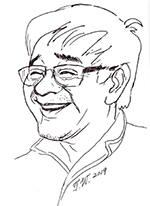 |
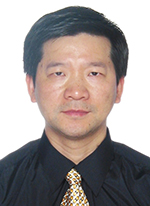 |
 |
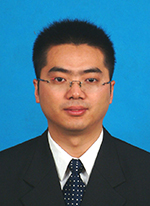 |
| Xi-Cheng Zhang University of Rochester, USA |
Juncheng Cao Shanghai Institute of Microsystem and Information Technology, CAS, China |
Xu Chen Xi'an Institute of Optics and Precision Mechanics, CAS, China |
Weiwei Liu Institute of Modern Optics, Nankai University, China |
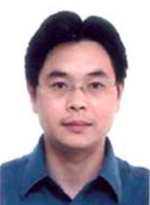 |
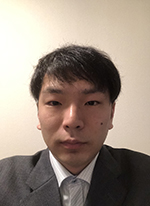 |
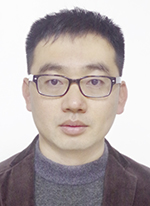 |
 |
| Guohong Ma Shanghai University, China |
Takeshi Moriyasu University of Fukui, Japan |
Jingbo Qi University of Electronic Science and Technology of China, China |
Wei Shi Xi'an University of Technology, China |
 |
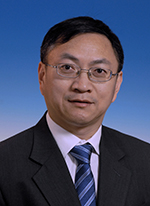 |
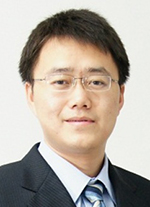 |
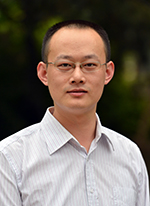 |
| Masahiko Tani University of Fukui, Japan |
Dayong Wang Beijing Institute of Technology, China |
Qijie Wang Nanyang Technological University, Singapore |
Xinke Wang Capital Normal University, China |
 |
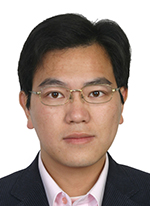 |
 |
 |
| Yingxin Wang Tsinghua University, China |
Qiye Wen University of Electronic Science and Technology of China, China |
Xiaojun Wu Beihang University, China |
Xinlong Xu Northwest University, China |
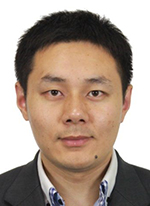 |
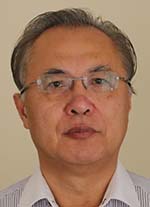 |
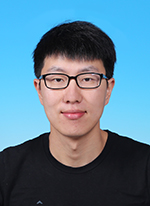 |
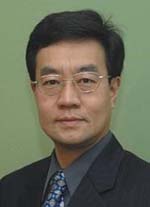 |
| Bo Zhang Capital Normal University, China |
Chao Zhang University of Wollongong, Australia |
Jingdi Zhang The Hong Kong University of Science and Technology, Hong Kong, China |
Weili Zhang Oklahoma State University, USA |
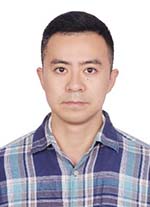 |
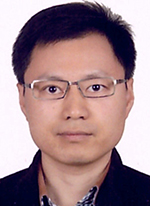 |
||
| Yaxin Zhang University of Electronic Science and Technology of China, China |
Liguo Zhu China Academy of Engineering Physics, China |
Challenges and opportunities for THz wave liquid photonics (Tutorial)
Xi-Cheng Zhang
University of Rochester, USA

Abstract
Normal universal matters are made of four states: solid, liquid, gas, and plasma. The generation of THz wave from solids, gases, and plasmas has been demonstrated, used, and understood for decades. However, the THz wave generation from liquid sources was conspicuously absent, especially from liquid water due to water's infamously strong absorption characteristics in the THz regime. It is reasonable to expect that liquids might have unique properties if they could be harnessed as THz sources. Liquids have a high molecular density, close to that of solids, meaning that light over a certain area will interact with many more molecules than an equivalent cross-section of gases. We present a systematic study of THz photonics in liquids by using laser induced micro-plasma. Specially we report the generation of broadband THz waves from liquids, include aqueous solutions (normal and heavy water, salty water, sugar water, alcohol solution), and over 20 different liquids (with different polarity and pH levels).
Biography
Xi-Cheng Zhang – Parker Givens Chair of Optics, the Institute of Optics, University of Rochester, USA. Dr. Zhang is a Fellow of AAAS, APS, IEEE, OSA, and SPIE. His honors and awards include: Alexander von Humboldt Prize ('18); Australia Academy of Science Selby Fellow ('17); IRMMW-THz Kenneth Button Prize ('14); OSA William F. Meggers Award ('12); IEEE Photonics Society William Streifer Scientific Achievement Award ('11); Rensselaer William H. Wiley 1866 Award ('09). He serves as Editor-in-Chief of Optics Letters ('14-'19).
Terahertz quantum cascade laser and its applications
Juncheng Cao
Shanghai Institute of Microsystem and Information Technology, CAS, China

Abstract
The terahertz (THz) quantum cascade laser (QCL), based on unipolar inter-subband transitions, has proven to be a promising radiation source for THz applications. Significant progress has been made over the last ten years. We have realized high power terahertz QCLs with a series of wavelengths, both working at pulsed mode and at continuous mode. Along with the remarkable development of THz QCLs, the wavelength of peak response of quantum-well infrared photodetectors has been extended into the THz region. The THz quantum-well photodetector (QWP) has been used as the THz detector for characterization of the emission spectrum of THz QCL. Terahertz QWP with one-dimensional reflection-grating coupler will also be presented, which has achieved peak responsivity 20% higher than that of the traditional 45-degree facet samples. The applications of these quantum devices to communication and imaging have been introduced. We demonstrate the transmission of real-time audio/video signal by using the THz QCL as a source in continuous wave mode and the THz QWP as a receiver.
Biography
J. C. Cao was born in Jiangxi, China, in 1967. He received the Ph.D. degree in electrical engineering from the Southeast University, Nanjing, China, in 1994. He is currently the professor of the Key Laboratory of Terahertz Solid-State Technology at Shanghai Institute of Microsystem and Information Technology, Chinese Academy of Sciences, China. From 1999 to 2000, he was a Senior Visiting Scientist at the National Research Council, Ottawa, ON, Canada. His current research interests include THz semiconductor quantum devices and their applications in THz communication and imaging. Dr. Cao received the National Fund for Distinguished Young Scholars of China in 2004. He got the Excellent Teacher Award from Chinese Academy of Sciences twice in 2006 and in 2011.
Research on multifunctional and high performance sensor based on THz metamaterials
Xu Chen
Xi'an Institute of Optics and Precision Mechanics, CAS, China

Abstract
Due to the characteristics of spectral resolution, non-destructive and label-free features, terahertz (THz) sensing technology based on electromagnetic metamaterials has very important application prospects in the fields of material identification, qualitative/quantitative analysis and biomedical detection, becoming an interesting research topic. However, most of the THz metamaterials sensors are currently constructed of metal materials, and there are two major problems of ohmic loss and difficulty in active modulation, which greatly limits the performance of the sensors. In this talk, with the following three aspects of numerical research works, the multifunctional and high efficiency THz sensor can be realized. One hand, designing and studying the THz metamaterials structure with toroidal dipole resonance response dominated to achieve high quality factor, and combining this toroidal metamaterials structure with the microfluidic channel, a THz sensor with ultra-high sensing performance figure-of-merit can be designed to realize sensing of gases and liquids. The other hand, by using low-loss high-index dielectric materials instead of metals, designing and constructing THz metamaterials sensors to solve ohmic losses that metal materials cannot avoid, and improving sensing performance. At last, designing metamaterials sensors by using graphene instead of metal, the graphene’s Fermi level can be changed by means of external bias voltage, thus realizing the active modulation of the sensor.
Biography
Dr. Xu Chen received his PhD degree from Xi'an Institute of Optics and Precision Mechanics, Chinese Academy of Sciences (2018). He is currently an assistant researcher of the State Key Laboratory of Transient Optics and Photonics at Xi'an Institute of Optics and Precision Mechanics, Chinese Academy of Sciences, China. He was awarded the National Postdoctoral Program for Innovative Talents of China in 2018. His main research interest focuses on terahertz functional devices based on metamaterials/metasurfaces. Relevant research works have been published on journal papers such as Carbon, Optics Letters, Scientific Reports, and so on.
Control of THz pulse polarization by two crossing DC fields during femtosecond laser filamentation in air
Weiwei Liu
Institute of Modern Optics, Nankai University, China

Abstract
Terahertz (THz) radiation induced by the femtosecond laser filament in air can be strongly enhanced through applying external DC field. In the present work, this technique has been extended to two-dimensional biasing, namely two pairs of electrodes, which are placed perpendicular to each other, are applied to provide two crossing DC fields. The experimental results have demonstrated that the amplitudes of two orthogonally components of the polarized THz pulse could be modulated by the electric field parallel to it, in an in-situ and real-time manner, while the phase delay between them keeps constant. Hence, the polarization of the output THz pulse could be freely controlled by adjusting the voltages of the two crossing DC fields, achieving arbitrary ellipticity. It might be the simplest method to manipulate the THz polarization during the femtosecond laser filamentation in air.
Biography
Prof. Weiwei Liu received his Ph.D degree from Laval University in 2005, and jointed Nankai University in 2007 as full professor. He is a world specialist in intense femtosecond laser propagation in optical media; i.e. intense femtosecond laser filamentation. He has already published more than 130 scientific papers in peer-reviewed journals in our field of research including Nature Photonics, Phys. Rev. Lett., Appl. Phys. Lett., Opt. Lett., etc. The total citation number of these publications is more than 4200 and his H-index reaches 33.
Now, he is serving as the director of Institute of modern optics, member of the standing committee of Chinese Optical Society and vice president of Optical Society of Tianjin. Based on his excellent achievement obtained during the past few years, Prof. Weiwei Liu was awarded the ‘Wang Daheng’s Optics Prize for middle-aged and youth of the Chinese Optical Society’,Tianjin’s Outstanding Contribution Expert.
Now, he is serving as the director of Institute of modern optics, member of the standing committee of Chinese Optical Society and vice president of Optical Society of Tianjin. Based on his excellent achievement obtained during the past few years, Prof. Weiwei Liu was awarded the ‘Wang Daheng’s Optics Prize for middle-aged and youth of the Chinese Optical Society’,Tianjin’s Outstanding Contribution Expert.
Spin order based THz wave generation and spectroscopy
Guohong Ma
Shanghai University, China

Abstract
The interaction between THz radiations with antiferromagnetic structure has been received special attention in recent year, due to the both academic concern as well as the potential applications in high dense data storage and fast reading and writing speed compared to the widely-used ferromagnetic structure. In this talk, I would like to introduce the latest research about the terahertz spintronics at ultrafast photonics Lab of Department of physics, Shanghai University. First of all, I would like to present our latest study on ultrafast THz emission based on the ferromagnetic structure. A new THz source, with compacted size, high efficient and broad band, is proposed. After that, I would like to give a brief introduction about the spin wave excitation, manipulation as well as the spin reorientation phase transition based on a canted antiferromagnetic structure probing with THz transient. Finally, I would like to touch on the strong coupling between the THz photon and magnon, and the formation of a hybrid excitation:magnon-poalriton in this kind of antiferromagnet.
Biography
Guo-Hong Ma obtained his Ph.D degree in Optics from Fudan University in 2001. He had been a research fellow in National University of Singapore during 2001-2005. He became a full professor at Shanghai University since 2005. Dr. Ma was awarded as “Pujiang Scholar” in 2006, and “Eastern Scholar” in 2008. Dr. Ma is the member of Optical Society of America (OSA) as well as the member of Singapore Materials Research (SMR).
Prof. Ma’s research interests cover ultrafast photonics, terahertz photonics and terahertz spintronics, he also pays attention on the control and optical manipulation of electronic spin in semiconductor and ordered magnetic system. Dr. Ma published more than 150 peer-reviewed papers, and he gave more than 40 oral presentations including 20 invited talks in international conferences.
Prof. Ma’s research interests cover ultrafast photonics, terahertz photonics and terahertz spintronics, he also pays attention on the control and optical manipulation of electronic spin in semiconductor and ordered magnetic system. Dr. Ma published more than 150 peer-reviewed papers, and he gave more than 40 oral presentations including 20 invited talks in international conferences.
Spin dynamics in magnetic materials observed by pump-probe spectroscopy and THz-TDS
Takeshi Moriyasu
University of Fukui, Japan

Abstract
Spin dynamics in magnetic materials, especially ultrafast ones, are attractive topics because of the potential application in the developments of spin control, spintronics, quantum computing. In solid-state materials, elementary excitations such as phonons and magnons play important roles, and many of those dynamics appear in the terahertz region of the electromagnetic wave. We investigated the ultrafast spin dynamics of isolated and correlated spin systems in crystals using the pump-probe technique and terahertz time-domain spectroscopy (THz-TDS).
In the presentation, In the presentation, we show that the optical pumping and the light shift effect are very useful to generate and control the magnetization in a isolated spin system, and that the time-domain spectroscopies have a large potential for the sensitive and accurate measurements of the terahertz region in correlated spin system. The dynamics of the isolated spin system was studied by the pump-probe technique in Rb atom and a Tm2+ doped crystal. On the other hand, the ultrafast spin dynamics of correlated spin systems was studied in single crystals of antiferromagnets MnO and NiO. The magnon modes were observed with higher accuracy than previous technique by using the pump-probe spectroscopy and THz-TDS experiments. the frequency of an antiferromagnetic magnon mode lies in the terahertz region, and the spectroscopically investigation in this frequency region is very important because of the significance of elementary excitations in the condensed matter physics.
In the presentation, In the presentation, we show that the optical pumping and the light shift effect are very useful to generate and control the magnetization in a isolated spin system, and that the time-domain spectroscopies have a large potential for the sensitive and accurate measurements of the terahertz region in correlated spin system. The dynamics of the isolated spin system was studied by the pump-probe technique in Rb atom and a Tm2+ doped crystal. On the other hand, the ultrafast spin dynamics of correlated spin systems was studied in single crystals of antiferromagnets MnO and NiO. The magnon modes were observed with higher accuracy than previous technique by using the pump-probe spectroscopy and THz-TDS experiments. the frequency of an antiferromagnetic magnon mode lies in the terahertz region, and the spectroscopically investigation in this frequency region is very important because of the significance of elementary excitations in the condensed matter physics.
Biography
Takeshi Moriyasu is a senior assistant professor of Department of applied physics at University of Fukui, currently. He was an assistant professor in Univ. of Fukui from 2016 to 2018, a part-time lecture in Osaka Dental Univ from 2011 to 2016. and a project researcher in Kobe Univ. from 2009 to 2016.
He received his B.A. degree in 2004 from Konan University, and then, Master of science in 2006 and Doctor of science in 2009 from Kobe University, respectively.
He has been studying the interaction of light and matter, so far. His main works include the all optical control of spin and observation of antiferromagnetic magnon modes using pump probe method and THz-TDS.
He received his B.A. degree in 2004 from Konan University, and then, Master of science in 2006 and Doctor of science in 2009 from Kobe University, respectively.
He has been studying the interaction of light and matter, so far. His main works include the all optical control of spin and observation of antiferromagnetic magnon modes using pump probe method and THz-TDS.
Chiral broadband terahertz wave emission from the Weyl semimetals
Jingbo Qi
University of Electronic Science and Technology of China, China

Abstract
A crucial element of the ultrafast coherent control is the generation of light or electromagnetic wave pulses with tunable polarization in a broad spectral range. Here, we discover strong chiral broadband terahertz emission from the topological Weyl semimetals and demonstrate unprecedented manipulation over its polarization and chirality on femtosecond timescale [1]. Such controllability is achieved via polarization-dependent, colossal ultrafast photocurrents generated using the circular and/or linear photogalvanic effect. Our finding opens a new route to realize chiral photon sources using quantum materials.
[1] Y. Gao, Y. Qin, Y. P. Liu, Y. L. Su, S. Kaushik, E. J. Philip, X. Chen, Z. Li, H. Weng, D. E. Kharzeev, M. K. Liu*, J. Qi*, arXiv:1901.00986 (2019).
[1] Y. Gao, Y. Qin, Y. P. Liu, Y. L. Su, S. Kaushik, E. J. Philip, X. Chen, Z. Li, H. Weng, D. E. Kharzeev, M. K. Liu*, J. Qi*, arXiv:1901.00986 (2019).
Biography
Jingbo Qi, a professor in the School of Electronic Science and Engineering, UESTC. He got his Ph.D. from Vanderbilt University. He was ever a postdoctoral associate in the National High Magnetic Field Laboratory (USA) and Los Alamos National Laboratory, respectively. His research interest focuses on using the ultrafast optical spectroscopy and terahertz spectroscopy to study the dynamics properties of various materials.
Detection of terahertz waves by photoconductive antenna array
Wei Shi
Xi'an University of Technology, China

Abstract
Based on the traditional THz-TDS system, it is a terahertz detection method to detect terahertz waves with photoconductive antenna. In order to solve the problem that the terahertz spot area is much larger than the clearance area of the antenna detector, this paper designed an array antenna to improve the utilization rate of terahertz spot, so as to improve the detection efficiency.
Biography
Wei Shi mainly engaged in ultrafast optoelectronic technology, terahertz science and technology and other aspects of research, has chaired one National Major Research and Development Projects of Scientific Instruments, one National Natural Science Foundation of China's key project, five National Natural Science Foundations of China, one National Major Basic Research Pre-project, and a number of provincial and ministerial projects. He has published more than 90 SCI papers in famous international journals.
Recipe for efficient EO sampling of THz waves
Masahiko Tani
University of Fukui, Japan

Abstract
The authors have been working for efficient THz wave detection by electro-optic sampling and techniques as listed below.
i) Cherenkov Phase matching
A high EO coefficient does not mean an efficient EO sampling detection of THz waves if a good phase matching condition is not realized in the EO crystal. Non-collinear Cherenkov phase matching solves this problem and makes it possible to use crystals with a high EO coefficient but with a bad phasing matching condition, such as LiNbO3.
ii) Focusing of THz waves by metallic parallel plate waveguide
EO signal can be enhanced by tightly focusing THz waves. By using a tapered parallel plate waveguide, THz waves can be tightly focused more than by using ordinary optics.
iii) Polarization filtering
In the ordinary π/2 phase biased EO sampling, the modulation depth in the probe beam intensity per THz electric field is fixed by the properties of the EO crystal and not adjustable. By using polarization filtering, the modulation depth in the probe beam intensity can be optimized depending on the available probe beam power.
In this paper, these techniques are reviewed with experimental data and discuss the recipe for optimization of THz EO sampling detection system.
i) Cherenkov Phase matching
A high EO coefficient does not mean an efficient EO sampling detection of THz waves if a good phase matching condition is not realized in the EO crystal. Non-collinear Cherenkov phase matching solves this problem and makes it possible to use crystals with a high EO coefficient but with a bad phasing matching condition, such as LiNbO3.
ii) Focusing of THz waves by metallic parallel plate waveguide
EO signal can be enhanced by tightly focusing THz waves. By using a tapered parallel plate waveguide, THz waves can be tightly focused more than by using ordinary optics.
iii) Polarization filtering
In the ordinary π/2 phase biased EO sampling, the modulation depth in the probe beam intensity per THz electric field is fixed by the properties of the EO crystal and not adjustable. By using polarization filtering, the modulation depth in the probe beam intensity can be optimized depending on the available probe beam power.
In this paper, these techniques are reviewed with experimental data and discuss the recipe for optimization of THz EO sampling detection system.
Biography
Masahiko Tani, Mr., Ph.D. in Engineering
Present Position:
Professor and Director of Research Center for Development of Far-Infrared Region, University of Fukui
President of Terahertz Technology Forum, Japan
Executive board member of the Spectroscopical Society of Japan
Educational background:
1987 Graduated from Kyoto University (Department of Physics Engineering)
1989 MD from Kyoto Univ. (Dept. PE)
1992 Ph.D. from Kyoto Univ. (Atomic and Molecular Physics and Spectroscopy)
Work Experience:
1992 Research Official with Kansai Advanced Research Center (KARC), Communications Research Laboratory, Japan
1997 Senior Research Official with Kansai Advanced Research Center, Communications Research Laboratory, Japan
2000 Associate Prof. with Research Center for Superconductor Photonics, Osaka University
2004 Associate Prof. with Institute of Laser Engineering, Osaka University
2008 Prof. with Research Center for Development of Far-Infrared Region, University of Fukui
2014-Present Director of Research Center for Development of Far-Infrared Region, University of Fukui
Present Position:
Professor and Director of Research Center for Development of Far-Infrared Region, University of Fukui
President of Terahertz Technology Forum, Japan
Executive board member of the Spectroscopical Society of Japan
Educational background:
1987 Graduated from Kyoto University (Department of Physics Engineering)
1989 MD from Kyoto Univ. (Dept. PE)
1992 Ph.D. from Kyoto Univ. (Atomic and Molecular Physics and Spectroscopy)
Work Experience:
1992 Research Official with Kansai Advanced Research Center (KARC), Communications Research Laboratory, Japan
1997 Senior Research Official with Kansai Advanced Research Center, Communications Research Laboratory, Japan
2000 Associate Prof. with Research Center for Superconductor Photonics, Osaka University
2004 Associate Prof. with Institute of Laser Engineering, Osaka University
2008 Prof. with Research Center for Development of Far-Infrared Region, University of Fukui
2014-Present Director of Research Center for Development of Far-Infrared Region, University of Fukui
Continuous-wave terahertz computed tomography
Dayong Wang
Beijing University of Technology, China

Abstract
Due to the unqiue non-destructive propagation and imaging capabilities, terahertz (THz) radiation has been widely adopted for variety of applications in security, biomedical imaing, and industrial inspection. Various three-dimensional (3D) THz tomogrpahic imaging approaches have been proposed, among which THz computed tomography (CT) is usually based on the state-of-the-art continuous-wave (CW) THz sources and geometrical optics that inspired from X-ray CT. In this presentation, the principals of projection data acqusition and 3D reconstruction algorithm would be introduced. THz illumination field manipulation approaches which have been successfully embeded into THz CT would be presented. Compared with traditional Gaussian illumination beam, the depth-of-view of THz CT system is expanded meanwhile the fidelity of reconstctrution is enhanced by using Bessel beam illumination. The application of CW THz CT for chicken ulna bone would also be introduced. In spite of lower spatial resolution compared with x-ray, THz imaging clearly discerns a compact bone from a spongy one.
Biography
Prof. Dr. Dayong Wang received his B.S. in 1989 from Huazhong University of Science and Technology, China, and Ph.D. in 1994 from Xi’an Institute of Optics and Fine Mechanics, Chinese Academy of Sciences. From 1994 to 1996, he did his postdoctoral work in Xidian University, China. In 1996, he joined the Department of Applied Physics, Beijing University of Technology (BJUT). From 1998 to 2000, he worked at the Weizmann Institute of Science, Israel, as a visiting scientist. Since 2000, he has been a professor in the College of Applied Sciences, BJUT. In 2016, he worked in University of California, Los Angeles as a senior visiting scientisit. His research interests include optical information processing, optical storage, holography, terahertz imaging and microwave photonics. He is a member of the COS, SPIE and OSA.
2D materials based Mid-infrared and Terahertz optoelectronics
Qijie Wang
Nanyang Technological University, Singapore

Abstract
Mid-infrared (MIR) and Terahertz (THz) spectral region, hereafter defined as the ~3 – 300 μm wavelength range, hosts particular scientific and technological interests. Many molecules have strong and rich spectral fingerprints in this MIR region, therefore, MIR photonic and optoelectronic devices are potentially very promising for a breath of applications such as environmental and bio-chemical sensing, defense and security, industrial control, and medicine, etc. Since the discovery of graphene in 2004, two-dimensional (2D) materials have attracted tremendous research interests due to their unique and intriguing electrical and optical properties. In this talk, I am going to present our research in applying 2D materials for applications in the MIR and THz regime. In particular, I will show our recent demonstrations of a room temperature broadband PtSex-based photodetector [1] and a high responsivity hybrid MIR photodetector based on graphene integrated with broadband oxide based nanoparticles [2].
Reference
Xuechao Yu, Peng Yu, Di Wu, Bahadur Singh, Qingsheng Zeng, Hsin Lin, Wu Zhou, Zheng Liu and Qi Jie Wang, “Atomically-thin Noble Metal Dichalcogenide: A Broadband Mid-infrared Semiconductor”, Nature Communication, 9:1545, 2018.
Xuechao Yu, Yangyang Li, Xiaonan Hu, Daliang Zhang, Ye Tao, Md. Azimul Haque, Tom Wu, and Q. J. Wang, “Room-Temperature Broadband Mid-infrared Photodetection Realized via Coupling Graphene with a Narrow-Bandgap Semiconductor”, Nature Communication, 9:4299, 2018.
Reference
Xuechao Yu, Peng Yu, Di Wu, Bahadur Singh, Qingsheng Zeng, Hsin Lin, Wu Zhou, Zheng Liu and Qi Jie Wang, “Atomically-thin Noble Metal Dichalcogenide: A Broadband Mid-infrared Semiconductor”, Nature Communication, 9:1545, 2018.
Xuechao Yu, Yangyang Li, Xiaonan Hu, Daliang Zhang, Ye Tao, Md. Azimul Haque, Tom Wu, and Q. J. Wang, “Room-Temperature Broadband Mid-infrared Photodetection Realized via Coupling Graphene with a Narrow-Bandgap Semiconductor”, Nature Communication, 9:4299, 2018.
Biography
Dr. WANG Qijie received the B.E. degree in electrical engineering from the University of Science and Technology of China (USTC), Hefei China, in 2001 graduating one year in advance; and the Ph.D degree in electrical and electronic engineering from Nanyang Technological University, Singapore, in 2005, with NTU and Singapore Millennium Foundation (SMF) scholarship. After completing his Ph.D, he obtained the 2005 SMF postdoctoral fellowship working in NTU. Then he joined School of Engineering and Applied Science, Harvard University, in Prof. Federico Capasso’s group as a postdoctoral researcher in Jan. 2007. In October 2009, he was assigned as a joint Nanyang Assistant Professor at the School of Electrical and Electronic Engineering (EEE) and the School of Physical and Mathematical Sciences (SPMS). Since Feb. 2015, he has been promoted to tenured associate professor in school of EEE and SPMS, NTU.
Dr. Wang has published/co-published more than 120 papers (including 9 invited papers) in top international journals (like Nature Photonics, Nature Materials, and Nature Communications), more than 100 conference papers (including numerous invited talks) and co-authored 10 U.S. patents. He was the recipient of the top prize for the Young Inventor Awards of the SPIE Photonics Europe Innovation Village in 2004; a golden award from the Fifth Young Inventor’s Awards in 2005 organized by HP and Wall Street Journal; and the co-recipient of the IES (Institution of Engineers Singapore) Prestigious Engineering Achievement Team Award of Singapore Twice in 2005 and 2017, respectively, 30th World Culture Special Recognition Award 2013, the prestigious Singapore Young Scientist Award 2014, and Nanyang Research Award 2015 (Young Investigator).
Dr. Wang has published/co-published more than 120 papers (including 9 invited papers) in top international journals (like Nature Photonics, Nature Materials, and Nature Communications), more than 100 conference papers (including numerous invited talks) and co-authored 10 U.S. patents. He was the recipient of the top prize for the Young Inventor Awards of the SPIE Photonics Europe Innovation Village in 2004; a golden award from the Fifth Young Inventor’s Awards in 2005 organized by HP and Wall Street Journal; and the co-recipient of the IES (Institution of Engineers Singapore) Prestigious Engineering Achievement Team Award of Singapore Twice in 2005 and 2017, respectively, 30th World Culture Special Recognition Award 2013, the prestigious Singapore Young Scientist Award 2014, and Nanyang Research Award 2015 (Young Investigator).
Generation and characterization of terahertz special beams
Xinke Wang
Capital Normal University, China

Abstract
With the maturation of terahertz (THz) technology, current THz systems have possessed stronger inspection ability and broader application fields. To further exploit the application potentials of THz technology on fundamental research and industry, the development of THz special beams has received growing attention. Because THz special beams have unique field distribution and diffraction characteristics, these THz beams show significant application advantages in the fields of particle manipulation, optical imaging, and optical communications. In this paper, some recent investigation advances of our group on THz special beams are discussed, including THz Bessel beam, THz vortex beam, THz Airy beam, THz bottle beam, and so on. The field distributions, diffraction characteristics, and application prospects of these THz beams are systematically analyzed and compared. We believe that these works are valuable for the development of future THz technology.
Biography
Xinke Wang, associate professor, Capital Normal University. Xinke Wang received his doctor degree in optics from Harbin Institute of Technology in 2011. From 2009 to 2010, he worked in Rensselaer Polytechnic Institute as a visiting scholar. Since 2011, he always works in Capital Normal University. In 2013, he was appointed as associate professor in the department of physics. He mainly works on investigations about THz focal-plane imaging, THz meta-surface, THz special beams, and so on. He has received 4 funding projects, 3 patents, and published over 30 refereed journal papers, including Advanced Optical Materials, Optics Letters, Optics Express, Applied Physics Letters, Scientific Reports, and so on.
Ultrabroadband and sensitive photodetection from ultraviolet to terahertz by improved thermoelectric materials
Yingxin Wang
Tsinghua University, China

Abstract
High-performance ultrabroadband photodetection from the ultraviolet to terahertz range of the electromagnetic spectrum using a single element has promising applications in communication, imaging, sensing, and spectroscopy. However, it is still a challenging task due to lack of appropriate detection mechanisms and photoactive materials. Bandgap-independent photothermoelectric (PTE) detectors derived from thermoelectric materials may serve as good candidates for such requirements because of their advantages of simple device geometry, uncooled and self-powered operation, and high integration level. In this talk, I will report a PTE detector based on the EuBiSe3 single crystal, an alloy of rare-earth element Eu and conventional thermoelectric material Bi2Se3. Benefiting from the large Seebeck coefficient of EuBiSe3, our device shows a nearly uniform photovoltage responsivity of as high as 1 V/W and a noise-equivalent power below 1 nW/√Hz from ultraviolet (375 nm) to terahertz (163 μm). The response time is nearly 2 orders of magnitude faster than silicon-based heterojunction ultrabroadband photodetectors. The EuBiSe3 crystal has a natural needle-like shape, intrinsically facilitating integration of the detector. In addition, I will also present our study of using three-dimensional microporous graphene to further enhance the sensitivity of PTE detectors.
Biography
Yingxin Wang is an associated professor of Engineering Physics department in Tsinghua University. He obtained his B.S. and Ph.D degrees in Tsinghua in 2004 and 2009 respectively. His major research field is focused on terahertz photonics and optoelectronics, with particular interests in the theory, technology, and applications of terahertz detection, spectroscopy and imaging. He has published more than 60 papers, including Science Advances, Nano Letters, ACS Photonics (cover), etc.
Structured silicon based spatial terahertz modulator
Qiye Wen
University of Electronic Science and Technology of China, China

Abstract
The real-world applications of terahertz (THz) technology necessitate versatile adaptive optical components, for example, the spatial THz modulators (STM), which allows fast THz imaging with a single detector. Recently, silicon based all-optical modulators attract a lot of attention due to their capability of fabricating STM with dense pixels and broadband operation.
In this talk, we firstly give a simple review of the recent progress of Si based STM, and then we introduced two kinds of performance-enhanced STM based on surface-structured silicon wafer. One STM is based on silicon nanotip array. This nanolayer can serve as an antireflective layer for both THz and optical light, and thus significantly decrease the insert loss of the device and increase the modulation depth to 75.8%. Another STM, however, is based on micro-textured silicon. This micro-textured surface also acts as an optical antireflection (AR) layer and reduces the reflection to about 10% from 400nm-1000nm. The enhanced light absorption effiency, together with the enlarged modulation area, endows this modulator with a modulation speed of 146.6kHz and a MD of 94.17% when illuminating by 638nm laser. By combining with high-speed digital micro-mirror device (DMD), a reconfigurable, cost-effective and power-efficient imaging system with a single-pixel detector has been demonstrated and fast THz imaging are well demonstrated.
In this talk, we firstly give a simple review of the recent progress of Si based STM, and then we introduced two kinds of performance-enhanced STM based on surface-structured silicon wafer. One STM is based on silicon nanotip array. This nanolayer can serve as an antireflective layer for both THz and optical light, and thus significantly decrease the insert loss of the device and increase the modulation depth to 75.8%. Another STM, however, is based on micro-textured silicon. This micro-textured surface also acts as an optical antireflection (AR) layer and reduces the reflection to about 10% from 400nm-1000nm. The enhanced light absorption effiency, together with the enlarged modulation area, endows this modulator with a modulation speed of 146.6kHz and a MD of 94.17% when illuminating by 638nm laser. By combining with high-speed digital micro-mirror device (DMD), a reconfigurable, cost-effective and power-efficient imaging system with a single-pixel detector has been demonstrated and fast THz imaging are well demonstrated.
Biography
Qi-Ye Wen is a professor in the School of Electronic Science and Engineering, University of Electronic Science and Technology of China. He was honored as a Changjiang sholar (youth project, 2016-2018). His research interests include terahertz imaging and communication and the related materials and devices. He has a particular interest in adapting micro- or nano- materials and metamaterial/metasurface for terahertz modulation, sensing and absorption. Published over 130 referred papers (two ESI 1% top-cited paper), international conferences and book chapters, 2 books, and 12 patents. His h-index is 20, and the total number of citations (web of Science) is above 2000 as of Dec. 2018.
Tailoring terahertz radiation in spintronic terahertz sources
Xiaojun Wu
Beihang University, China

Abstract
In this talk, I will briefly introduce our recent work on spintronic terahertz radiation from ferromagnetic/heavy metal heterostructures driven by femtosecond laser pulses. Not only we verify the inverse spin Hall effect based highly efficient terahertz radiation, but also, we observe radiated terahertz electric field component parallel to the applied magnetic field directions. Since this polarization of such kind of novel terahertz source can be controlled by the external magnetic field direction, we generate elliptical terahertz beam when engineering the applied magnetic field distribution. Furthermore, we can even have the chance to generate circularly polarized terahertz beams when we use cascaded generation schemes. Hopefully, this work can not only help with further understanding the femtosecond magnetics but also contribute for the next-generation novel terahertz sources.
Biography
Prof. Xiaojun Wu got her Ph.D degree in the Institute of Physics, Chinese Academy of Science in 2013. During August 2014-April 2017, she was awarded the Alexander von Humboldt Fellowship. From January 2014 to December 2015, she served for Member and Education Services Council of the Optical Society of America (OSA). In May 2017, she joined in Beihang University and started a terahertz research group. She has participated in more than ten projects from National Natural Science Foundation of China (NSFC), Deutsche Forschungsgemeinschaft (German Research Foundation, DFG), and European Research Council (ERC), and has contributed as a core member in Prof. Franz X. Kaertner’ group for the project “Frontiers in Attoseconds X-ray Science: Imaging and Spectroscopy” funded by ERC, and recently for the project of “GW super strong terahertz source and its applications” funded by NSFC.
THz technology for Van der Waals heterostructures
Xinlong Xu
Northwest University, China

Abstract
Graphene/semiconductor Van der Waals heterostructures demonstrates the improvement of traditional electronic and optoelectronic devices due to their outstanding charge transport properties inside and at the interfaces. However, very limited information has been accessed from interface properties by traditional measurement. Herein, we present an active THz surface emission spectroscopy from graphene on SiO2/Si (Gr/SiO2/Si) for the interface build-in potential and charge detrapping time constant evaluation. The active THz generation presents an intuitive insight into the depletion case, weak inversion case, and strong inversion case at the interface in the heterostructure. The investigate will not only highlight the THz surface emission spectroscopy for the graphene-based interface analysis, but also hold a potential for the enhancement of THz emission by the heterostructures.
Biography
Professor Xinlong Xu received his PhD degree from Institute of Physics, Chinese Academy of Sciences. He is a professor of Optics and Condensed Matter Physics in Institute of Photonics & Photon-Technology, Northwest University, Xi’an, China.
His research interest focuses on ultrafast physics, especially terahertz photonics and devices based on ultrafast laser.
His research interest focuses on ultrafast physics, especially terahertz photonics and devices based on ultrafast laser.
Terahertz read-only multi order nonvolatile rewritable photo-memory based on indium oxide nanoparticles
Bo Zhang
Capital Normal University, China

Abstract
We investigate terahertz (THz) read-only multi-order nonvolatile rewritable photo-memory based on indium oxide (In2O3) nanoparticles. Optical excitation of an In2O3/quartz sample increases its conductivity, which attenuates its THz transmission. When the optical excitation is terminated, the modulated THz transmission can recover back to its original value in air. However, the THz transmission shows no obvious change over a long-term when In2O3/quartz is encapsulated in an inert gas (nitrogen). Multi-order nonvolatile digital information storage is obtained under different light intensities, and the photo-memory can be rewritten after thermal annealing. Different THz transmissions are used as coded signal units, which are programmed to store information. These results show that THz read-only multi-level nonvolatile rewritable photo-memory can be realized.
Biography
Bo Zhang, associate professor, Capital Normal University. He received the B.S. degree from Capital Normal University (CNU), Beijing in 2007 and the Ph.D. degree from Beijing Jiaotong University (BJTU), Beijing in 2012, respectively. His research interests include terahertz spectroscopy, THz functional device. Relevant research has been published more than forty journal papers such as Appl. Phys. Lett., Opt. Lett., Opt. Express, etc.
Electrical and magneto-optic properties of 3D topological materials in terahertz regime
Chao Zhang
University of Wollongong, Australia

Abstract
We discuss some optical and transport properties of three dimensional Dirac materials. (1) In 3D Dirac materials, the energy equipartition theorem gives rise to an average energy of kBT. This is twice of the energy in traditional materials. This enhanced energy leads to an enhanced thermionic cooling efficiency which is higher than that in normal metal and in graphene. (2) Fast charge dynamics has been studied, taking into account the electron-acoustic photon and electron-optical phonon interaction. Results indicate that the charge relaxation is directly proportional to the gap. (3) The shape of the Fermi surface of topological nodal-ring semimetals at low carrier concentrations is characterized by the ring radius b/hvF. This peculiar topological property may not have a clear signature in measurable physical quantities. We demonstrate an accurate and definitive method to determine the radius of topological nodal-ring semimetals. Under a magnetic field along the ring axis, the axial magneto-optical response has a giant peak. The position of this ultra strong response is at the frequency of exactly 2b in terahertz regime and is independent of the strength of the magnetic field.
Biography
Professor Chao Zhang received his PhD in physics in 1987 from City University of New York, USA. From 1987 to 1989, he was a postdoctoral fellow at Max-Planck-Institute for Solid Research in Stuttgart, Germany, working on quantum magneto-transport in semiconductor nanostructures. From 1989 to 1992, He was a research associate at Canada’s Meson Research Facility in Vancouver, working on quantum coherence and dissipation in solids. Since 1993, he has been a tenured faculty member in the School of Physics, University of Wollongong, Australia. Currently he is a senior professor of physics. From 2004-2014, he served as the associate director of the Institute of Superconducting and Electronic Materials. He is a Fellow of Australian Institute of Physics. He is the associate editor of Frontier of Optolelectronics and a member of the editorial board of Scientific Reports. He is an advisory member of the International Organizing Committee for Infrared, Millimeter and Terahertz Waves. His research interest is in the areas of quantum transport of nanostructures, terahertz photonics, nonlinear dynamics of semiconductors, graphene and topological insulators.
Ultrafast dynamic control of emergent phases in transition metal oxides
Jingdi Zhang
The Hong Kong University of Science and Technology, Hong Kong, China

Abstract
In correlated transition metal oxides (TMOs), interactions between the electron, lattice, spin and orbital degrees of freedom (DOFs) have proven to be a fertile land of emergent quantum phenomena and competing quantum phases. The delicate balance between these competing quantum phases are often sensitive to conventional external stimuli, including pressure, magnetic and electric field, offering avenues for new functionalities and unveiling fundamental physics of quantum materials. In the past decades, profound advancement of material science and ultrafast science opens up exciting possibilities for exploiting ultrafast laser spectroscopy to dynamically study and control emergent phases in quantum materials with photons. In this talk, I will describe state-of-the-art ultrafast spectroscopic technique that enabled us to access the photo-induced states in TMOs. I will show examples that demonstrate ultrafast dynamic control of strongly correlated quantum materials by mode-selective excitation with pulsed electromagnetic field. These include: (i) Recent discovery of a new collective mode induced by optical excitation in a stripe-ordered cuprate superconductor La2-xBaxCuO4, evidenced by time-domain THz spectroscopy. (ii) Cooperative photo-induced metastable “hidden” phase in a colossal magnetoresistance (CMR) manganite La0.67Ca0.33MnO3, investigated by ultrafast far-field pump-probe spectroscopy and near-field scanning optical microscopy.
Biography
Dr. Jingdi Zhang is currently an assistant professor of Physics at the Hong Kong University of Science and Technology (HKUST). He received B.S. at University of Science and Technology of China (2007) and Ph.D. in Physics at Boston University (2014). He moved to coastal La Jolla, California in 2015, and worked as a postdoctoral fellow at UC San Diego before joining the faculty of HKUST Physics. His main research interest is the study of strongly correlated electron materials, metamaterials and plasmonics using ultrafast spectroscopy.
All-dielectric subwavelength terahertz systems
Weili Zhang
Oklahoma State University, USA

Abstract
Composite materials comprised of subwavelength-sized resonators arranged in a periodic array may be designed to interact with the terahertz field of propagating or surface waves in ways not observed in natural materials. Recent advances in plasmonics and metamaterials have opened up a pathway toward integrated functional terahertz devices. Subwavelength systems made from thin metallic films, however, are subject to strong ohmic losses inherently decreasing the efficiency. We study all-dielectric subwavelength systems using the state-of-the-art terahertz time-domain spectroscopy and terahertz near-field spectroscopy in both fee space and near field with an ultimate goal of developing high-efficiency next-generation integrated devices and components functioning in the terahertz regime.
Biography
Weili Zhang joined the faculty of Tianjin University in 1992 and Oklahoma State University in 2002. He is currently professor of Electrical Engineering at Oklahoma State University and visiting professor of the Center for Terahertz Waves at Tianjin University. His research interests include terahertz optoelectronics, nano- and micro-structured materials optics, and ultrafast phenomena. He serves as Associate Editor of PhotoniX, Topical Editor of Chinese Optics Letters, and Editorial Board Member of a number of peer-reviewed journals. He is a Fellow of The Optical Society (OSA).
High speed THz on-chip modulator with the active meta unit-cell
Yaxin Zhang
University of Electronic Science and Technology of China, China

Abstract
The past decades witnessed a substantial increase in THz research activities. Utilizing THz waves to transmit data for communication and imaging places high demands in phase and amplitude modulation. However, till now active THz devices including modulators and switches still cannot meet the demands of THz systems.
In this presentation, we present the high speed THz on-chip modulator by combing the microstrip line and active 2DEG meta unit-cell. The experimental results show that such modulator can reach to more than 10Gbps modulation speed with 90% modulation depth. More important, this modulator can be integrated on chip for compact THz application systems.
In this presentation, we present the high speed THz on-chip modulator by combing the microstrip line and active 2DEG meta unit-cell. The experimental results show that such modulator can reach to more than 10Gbps modulation speed with 90% modulation depth. More important, this modulator can be integrated on chip for compact THz application systems.
Biography
Dr. Zhang Yaxin
Professor of School of Electronics Science and Engineering, University of Electronic Science and Technology of China. He received the B.Sc.degree from Sichuan University, Chengdu, China, in 2003, and the M.Sc. and Ph.D. degrees from the University of Electronic Science and Technology of China, Chengdu, in 2006 and 2009, respectively.
He is selected into the National youth talent support program and New century excellent talents in university of Ministry of Education of China. His main research interests include terahertz high-speed wireless communication technology, including new terahertz signal source for wireless communication and terahertz functional devices (terahertz modulator, resonator, filter, etc.). He has already published more than 60 SCI papers including Nano letters, Phys. Rev. Lett., Nanophotonics, ACS Photonics, Laser & Photonics Reviews and so on.
Professor of School of Electronics Science and Engineering, University of Electronic Science and Technology of China. He received the B.Sc.degree from Sichuan University, Chengdu, China, in 2003, and the M.Sc. and Ph.D. degrees from the University of Electronic Science and Technology of China, Chengdu, in 2006 and 2009, respectively.
He is selected into the National youth talent support program and New century excellent talents in university of Ministry of Education of China. His main research interests include terahertz high-speed wireless communication technology, including new terahertz signal source for wireless communication and terahertz functional devices (terahertz modulator, resonator, filter, etc.). He has already published more than 60 SCI papers including Nano letters, Phys. Rev. Lett., Nanophotonics, ACS Photonics, Laser & Photonics Reviews and so on.
Non-scanning terahertz wave sub-diffraction-limited imaging enable by near-field compressive sensing
Liguo Zhu
China Academy of Engineering Physics, China

Abstract
In this talk, I'll present an experimentally demonstrated novel non-scanning near-field THz imaging with resolution of ~λ /133 (@0.5 THz), which is realized by compressive sensing the near-field THz imaging. In our proposed non-scanning THz near-field imaging, a digital micro-mirror device (DMD) was used to spatially code the incident 800nm femtosencond (fs) -laser pulses with designed patterns (Hadamard masks), and the patterned fs-laser pulses further spatially modulate THz pulse through exciting 100nm thick vanadium dioxide (VO2) thin film. The phase transition material VO2 was utilized as spatial light modulator. With single-pixel Hadamard detection of the evanescent waves, we reconstructed the THz wave near-field image of an object from a serial of encoded sequential measurements, yielding improved signal-to-noise ratio by one-order magnitude over standard raster-scanning technique. Further, we demonstrate the acquisition time was compressed by a factor of over four with 90% fidelity using total variation minimization algorithm. The proposed terahertz wave near-field imaging technique inspires new and challenging applications, such as cellular imaging.
Biography
Li-Guo Zhu, PhD, is a professor of optics in China Academy of Engineering Physics (CAEP). He received his Ph.D. from Tsinghua University (Beijing, China) in 2011. And, he worked as a joint-PhD student (2009-2011) in Case Western Reserve University (Ohio, US). Now, he is the director of Terahertz Spectroscopy and Imaging Research Lab and vice director of Fast Optoelectronics and Application Research Lab in CAEP. His current research majors in ultrafast terahertz spectroscopy and imaging, material dynamic response studied by terahertz wave, and terahertz techniques for biomedical applications. He authored/co-authored >40 SCI papers and gave >10 invited/keynote talks. He was awarded with PhD Scholarship (2009-2011) from CSC, President's Scholarship (2015-2018) and “Double-Hundred Talents” project (the 7th batch, 2016-2022) from CAEP, and two prizes for scientific innovation (2016, 2017).

 您当前的位置:
您当前的位置: